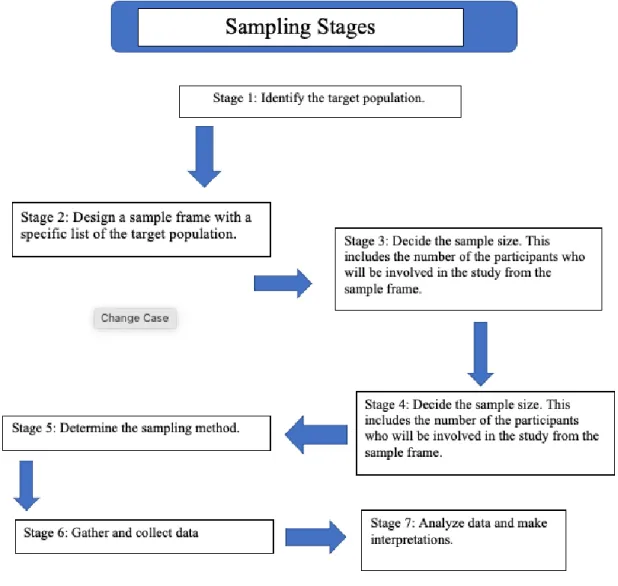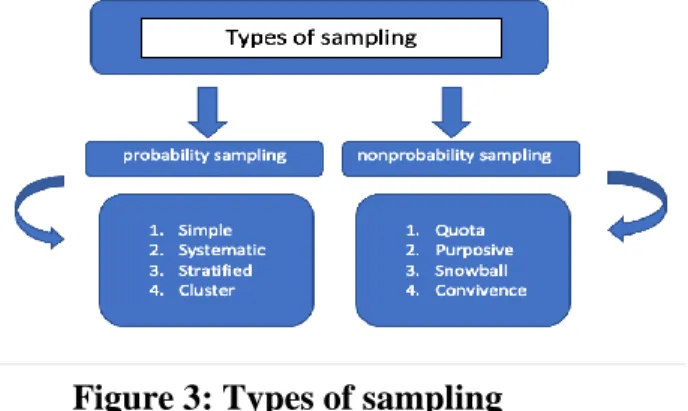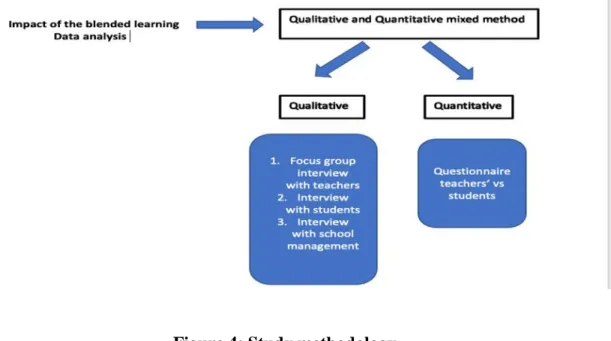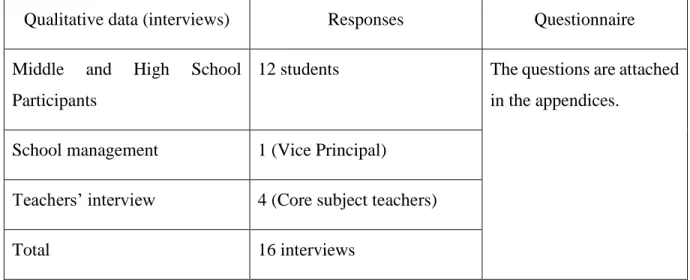This research attempts to investigate the learners', teachers' and school management's perceptions of blended learning. Based on the data analysis, the study concluded that teachers reported a positive attitude towards blended learning, while students indicated a negative attitude towards the implementation of blended learning. 67 Figure 37: Blended learning helps to create a collaborative environment among students and develop positive attitudes towards learning.
72 Figure 44: Modules and course content in the online and blended learning model meet all students' needs. 73 Figure 46: The school has designed a clear policy on how to teach using the blended learning model.
INTRODUCTION
The significance of the study
Grahams (2013) confirmed that there is limited evidence to investigate the effectiveness of blended learning and theory. In this regard, the impact of blended learning and online learning on students' educational progress and emotional well-being needs to be investigated. In the absence of studies on the effectiveness of blended learning in the UAE context, this study will provide a focused review of the impact of a technology-mediated model on middle and high school students.
In addition, the study will focus on students' attitudes towards blended learning and whether it affects them positively or negatively in terms of their emotional well-being. Students will be interviewed to record their responses to how effectively they gain knowledge through blended learning.
Overall aim of the study
In this regard, blended learning was one of the focused components where technology is combined with traditional learning. However, the limitation of the studies and the lack of reviews on that topic should be highly considered.
Theoretical framework
- Gardner’s theory of Multiple Intelligence
- Blended learning and the constructivist theory
- What is the relation between blended learning and Self- Determination theory?
Moore & Kearsley (2011) explained that blended learning is a combination of technology-based education and socially driven situational activities that are fused into a structured design to engage the learners' interests and build their learning experience. Constructivists also argued that in order to enhance the learners' learning experience, there must be social interactions between learners and their instructors. Regarding the blended learning approach, SDT plays a critical role in building the learners' self-autonomy.
The students also revealed the positive effect and improvement of autonomous motivation on the learners' self-exploration and involvement in the learning classroom. Blended learning based on the SDT studies helps to improve learners' self-autonomy as previously mentioned.
LITERATURE REVIEW
- What is blended learning?
- Blended learning studies on K-12 and higher education
- The relationship between blended learning and learning style
- Blended learning in accordance with academic achievements
- The impact of blended learning on learners’ satisfaction and learning skills
- Counterargument on blended learning benefits
- What are the factors that play an important role in blended learning implementation?
Another report was launched by the Rochester Institute of Technology on the effectiveness of the blended learning environment. Graham & Dziuban (2008) noted that the blended learning programs were creatively executed and planned. The study findings indicated the learners' high satisfactory level in the blended learning model.
Not to mention the benefits of blended learning on learners' understanding of real-life situations. In Khur's (2013) study, the definition of blended learning explained the importance of blended learning.
METHODOLOGY
- Introduction
- Research objectives
- Research questions
- Sampling and Participants
- Sampling procedures
- A sampling analysis
- Data Collection
- Triangulation method
- The Insider Research technique
- Data collection instruments
- Ethical consideration
- Data analysis
- Reliability and authenticity
This paper mainly investigates the effectiveness of blended learning and its implementation during the Covid 19 pandemic. The main point of this research is to examine the effectiveness of blended learning on the academic and emotional well-being of students. It is the role of the researcher to articulate all the characteristics of that phenomenon based on the data collected.
The basic aim of the interview was to explore the perspectives of teachers and students in relation to the effectiveness of blended learning. The researcher has believed that being part of the process will provide insight into the study. The focus group's contribution gave the researcher a number of answers from the teachers.
The primary purpose of the open-ended questions was to investigate teachers' perceptions of the effectiveness of blended learning. However, the researcher has finally decided to consider one side of the students based on gender. The questions were scientifically selected to examine the teachers' perception of the effectiveness of blended learning.
Quota sampling is a part of the non-probability sampling method in which the study population is selected based on specific qualities. The quality of survey research is determined by the validated data and the authentic tools that the researcher has used to analyze the data. However, in order to achieve a high standard of fairness, the researcher should include the parents' point of view as a fundamental element of the study.
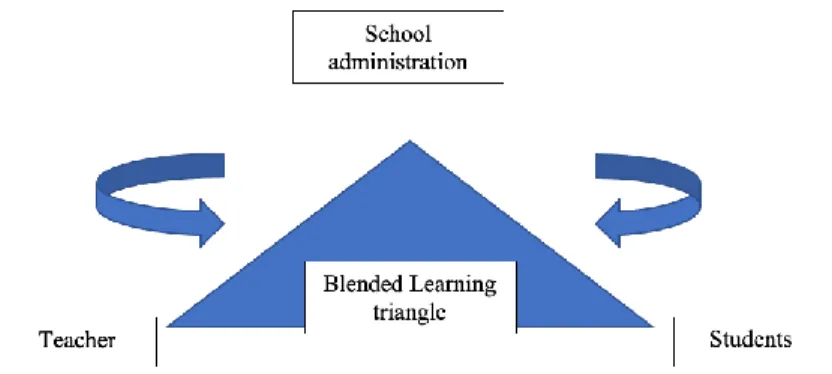
FINDINGS
Introduction
Response Rate
Qualitative data
It was clear from the quotes above that teachers were aware of the blended learning approach. The second part of the focus group interview focused on the role of teachers and students in the blended learning classroom. Blended learning students are more active and dynamic compared to traditional learning students who are passive.
The teachers' responses included several obstacles they encountered while implementing the blended learning curriculum. The importance of interaction and communication between students and teachers in the blended learning model. The purpose of the interview was to examine the school's administrative attitude towards the implementation of blended learning.
The first question examined the school's administrative vision for the effectiveness and success of blended learning in the time of covid-19. Q1: How do you rate the school's experience using blended learning and online learning in the time of covid-19. Q1: Do you prefer traditional face-to-face learning or online and blended learning?
Question 2: Do you understand the teacher better in the classroom using the traditional learning model or the online and blended learning model. Question 5: Do you think that online and blended learning has provided a better opportunity to improve your language skills. The students' responses indicated that blended learning is a pedagogical pedagogy that combines both face-to-face and online learning.
Quantitative data
- Students' survey data analysis
- Teachers’ survey data analysis
The chart above demonstrated student satisfaction with the content and materials selected in the blended learning model. 36% of participants believed that online and blended learning has changed their perspective on learning, and 20% agreed that blended and online learning has not affected their perspectives on learning. 33% of the total population disagreed that blended and online learning facilitated cheating and plagiarism of ideas without references, while 23% of students agreed that online and blended learning facilitated cheating and plagiarism.
Q 15: How satisfied are you with the blended learning and online learning experience over the past 2 years. 44% of learners agreed that they felt isolated because of the online study, while 27% disagreed that online and blended learning isolated them. Q 20: I feel confident when learning through online learning and blended learning compared to face-to-face learning on school grounds.
46% of learners disagreed that online and blended learning boosts their confidence, while around 17% agreed that blended and online learning boosts their confidence compared to face-to-face learning. About 15% of learners agreed that blended learning courses are more communicative than face-to-face learning, while 54% disagreed that blended learning courses are more communicative. It also examined the teachers' methodology to deliver the content in blended learning and online learning environment.
An overall percentage of 28% of teachers agreed that blended learning content is easier for students than face-to-face, while 55% disagreed. Question 14: The class discussions and activities in the blended learning model are more engaging for students than a face-to-face model. Question 15: Modules and course content in the online and blended learning model meet the needs of all students.
Regarding technical challenges, 78% of teachers agreed that they encountered technical difficulties during blended learning, while 6% disagreed that blended learning has more technical challenges that require more face-to-face instruction. Q 17: The school has developed a clear policy on how to teach using a blended learning model.

DISCUSSION
Blended learning effectiveness and implementation
According to Bonk, Kim and Zeng (2006), flexibility is one of the successful criteria for blended learning. Teachers reported that the blended learning experience was positive due to the feasible use of resources and technology. In addition, teachers agreed that blended learning supported students' self-autonomy and building accountability for their learning.
In addition, interview questions from teachers indicated that blended learning helps students build self-responsibility for their own learning. Zhang and Zhu (2018) conducted a study on the effectiveness of blended learning on student academic performance in ESL classrooms. In conclusion, teachers of this current study analysis reported having a positive attitude towards blended learning during Covid 19.
The study has a fundamental part of examining learners' perceptions of blended learning, and how blended learning positively or negatively impacted their learning. The student interview questions were designed to explore and explore their perceptions of blended learning and its effectiveness. For example, from questions one and two of the interview, it was concluded that students' views and attitudes towards blended learning are compared to traditional learning.
The students' views in this study were in contrast to Salman (2002) who conducted a study to investigate the impact of blended learning on students' academic growth. Positive attitudes toward learning activities in a blended learning model such as Padlet and Nearpod have been reported. Regarding student motivation, the study directly concluded that students were not motivated to learn independently in a blended learning environment.
Blended learning influence learners’ academic progress and emotional well-being
Challenges of blended learning
One of the challenges that teachers explained was their inability to provide continuous feedback on student work. In conclusion, this section aims to answer the research questions based on the mixed method data analysis.
CONCLUSION AND RECOMMENDATIONS
Conclusion
Recommendation
Teachers should be involved in professional programs and training to improve the results of blended learning in the classroom. Digital issues need to be addressed and handled properly before the starting point of the blended learning program. Teachers should be trained how to design a blended learning course instead of relying on commercial curriculum.
An urgent need for further research on how to improve blended learning implementations and limit its negative impact on students' emotional well-being. The effect of blended learning on ninth grade students' science achievement and their attitudes toward its use. Implications of online and blended learning for the conceptual development and practice of distance education.
International Journal of E-Learning & Distance Education/Revue internationale du e-learning et la formation à distance, 23(2), pp.93-104. 34;Effect of Blended Learning Environment Model on High School Students' Academic Achievement." Turkish Online Journal of Educational Technology-TOJET 13, No. See You on "Facebook": The Effects of Computer-Mediated Teacher Self-Disclosure on Student Motivation, Affective Learning, and Classroom Climate.
Teacher’s Interview Questions
School Management Interview Questions
Students’ Interview Questions
